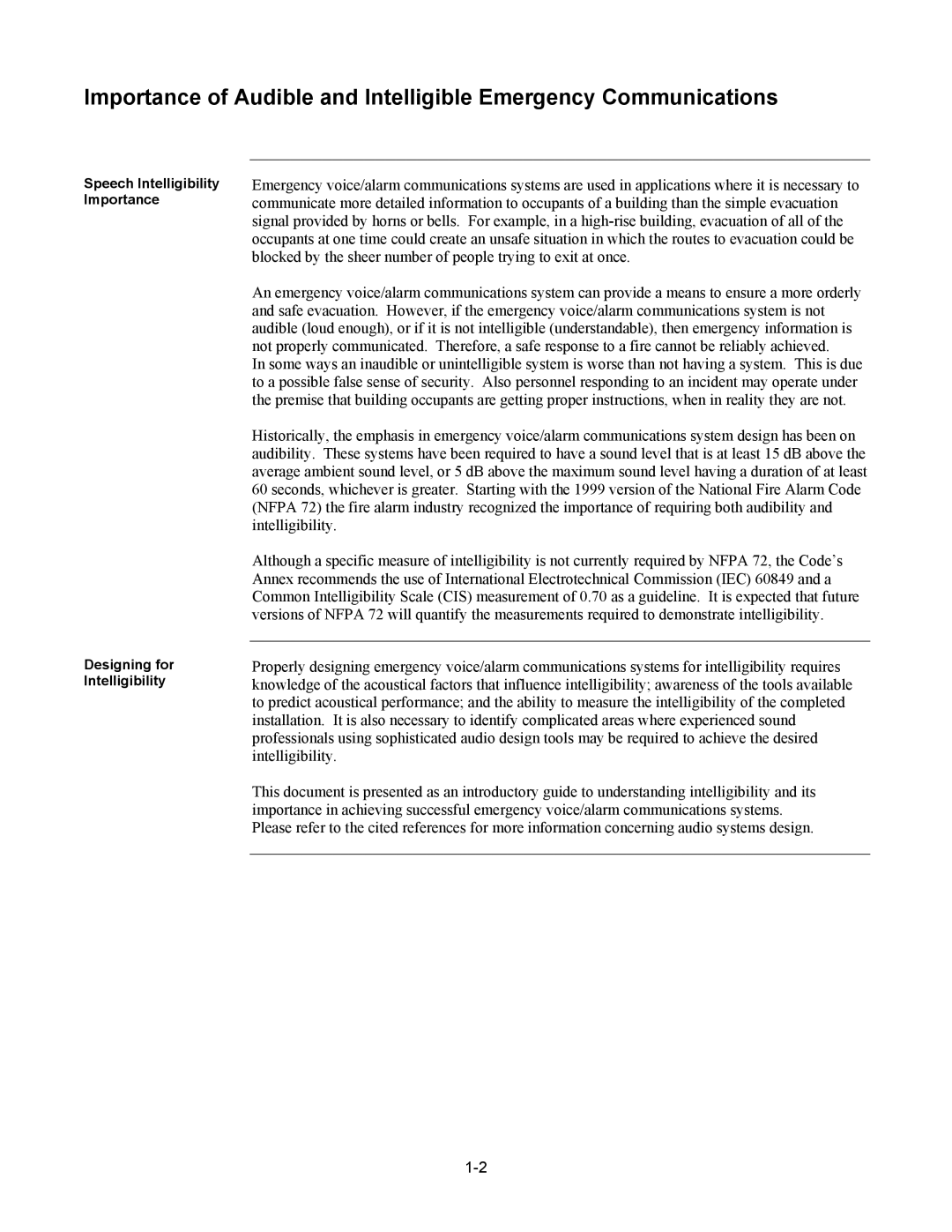
Importance of Audible and Intelligible Emergency Communications
Speech Intelligibility Importance
Designing for
Intelligibility
Emergency voice/alarm communications systems are used in applications where it is necessary to communicate more detailed information to occupants of a building than the simple evacuation signal provided by horns or bells. For example, in a
An emergency voice/alarm communications system can provide a means to ensure a more orderly and safe evacuation. However, if the emergency voice/alarm communications system is not audible (loud enough), or if it is not intelligible (understandable), then emergency information is not properly communicated. Therefore, a safe response to a fire cannot be reliably achieved.
In some ways an inaudible or unintelligible system is worse than not having a system. This is due to a possible false sense of security. Also personnel responding to an incident may operate under the premise that building occupants are getting proper instructions, when in reality they are not.
Historically, the emphasis in emergency voice/alarm communications system design has been on audibility. These systems have been required to have a sound level that is at least 15 dB above the average ambient sound level, or 5 dB above the maximum sound level having a duration of at least 60 seconds, whichever is greater. Starting with the 1999 version of the National Fire Alarm Code (NFPA 72) the fire alarm industry recognized the importance of requiring both audibility and intelligibility.
Although a specific measure of intelligibility is not currently required by NFPA 72, the Code’s Annex recommends the use of International Electrotechnical Commission (IEC) 60849 and a Common Intelligibility Scale (CIS) measurement of 0.70 as a guideline. It is expected that future versions of NFPA 72 will quantify the measurements required to demonstrate intelligibility.
Properly designing emergency voice/alarm communications systems for intelligibility requires knowledge of the acoustical factors that influence intelligibility; awareness of the tools available to predict acoustical performance; and the ability to measure the intelligibility of the completed installation. It is also necessary to identify complicated areas where experienced sound professionals using sophisticated audio design tools may be required to achieve the desired intelligibility.
This document is presented as an introductory guide to understanding intelligibility and its importance in achieving successful emergency voice/alarm communications systems. Please refer to the cited references for more information concerning audio systems design.
